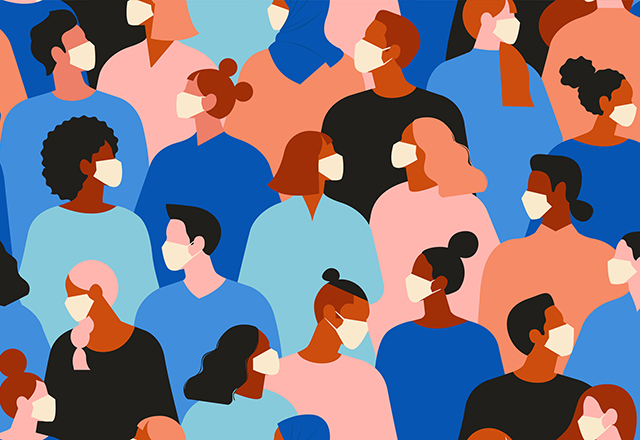Like most front-line health care workers, I received my two COVID-19 vaccinations earlier this year. Both days were filled with an overwhelming sense of relief and catharsis. Never before have I felt such a weight being lifted from my shoulders.
Since then, Gov. Hogan has continued to expand COVID-19 vaccine eligibility in Maryland to include nursing home residents, teachers and those over the age of 65. As of recently, people with specific immunocompromised conditions requiring hospital based (or clinic) care also qualify. However, Maryland only receives approximately 75,000 vaccines per week from the federal government to cover a population of over 1.5 million eligible persons.
While the population is increasingly being vaccinated, it also brings up new questions that have yet to be answered. Perhaps the most pressing is: Can those of us who have received the vaccine still transmit the virus? And second: Do public health measures such as mask-wearing and social distancing still apply to those of us who now have immunity?
Masking is here to stay
The U.S. Centers for Disease Control and Prevention still recommends that people wear masks and avoid close contact with others to help prevent the spread of the coronavirus that causes COVID-19, even after they are vaccinated. Learn more about coronavirus face masks and protection.
Why is this true?
The primary reason is that there is not yet enough data to show that vaccinated people cannot transmit the virus. Studies are looking at whether the vaccine, even when effective at preventing disease, keeps a person from harboring the virus and passing it to others. Everyone still needs to maintain recommended safety precautions for the foreseeable future.
Furthermore, while the Pfizer and Moderna vaccines are great, they are not perfect. Authorized mRNA vaccines are about 95% effective, meaning that a few people who receive it may still be able to get infected and transmit the virus. Variant (mutated) forms of the virus also pose a potential threat of escaping immune responses.
Inequity in Health Care
There’s one additional reason why vaccinated people should still abide by masking and social distancing protocols when everyone who wants a vaccine hasn’t received one yet. Due to underlying racial and ethnic disparities that already exist in health care access in this country, it’s possible that there is unequal access to vaccines. The policy of vaccine distribution should be based on principles of health equity, meaning that those who are most in need of a vaccine are able to receive it regardless of their ability to access care or to pay.
In part for this reason, we already have a precedent for general vaccine distribution: For example, all states currently have laws requiring certain vaccinations for schoolchildren (though some religious and medical exceptions are allowed).
These laws are based on theories of distributive justice that prioritize the “common good” over the protection of individual liberties. The state’s authority to enforce such mandates dates back to a 1905 legal case called Jacobsen v. Massachusetts, in which the U.S. Supreme Court upheld the legality of an ordinance in Cambridge, Massachusetts, requiring that all adults be vaccinated or re-vaccinated against smallpox. State laws that require certain vaccinations for schoolchildren represent a positive mandate that helps ensure the protection of our children and other high-risk groups.
All in all, for the sake of those who have not, or cannot, receive the vaccine, we all need to continue wearing masks and practicing social distancing. The end is certainly in sight, but we are not there yet. So, until everyone who is eligible for and wants a vaccine has received one, let’s continue to keep our heads high, our spirits up and our masks on.
Related content
- Distributing Vaccines: Smallpox and the History of Vaccine Campaigns
- Anti-Vax to Anti-Mask: Processing Anti-Science Claims During a Pandemic
- The Bayview Oath: Transcending Barriers in the Time of COVID-19
Want to read more from the Johns Hopkins School of Medicine? Subscribe to the Biomedical Odyssey blog and receive new posts directly in your inbox.
